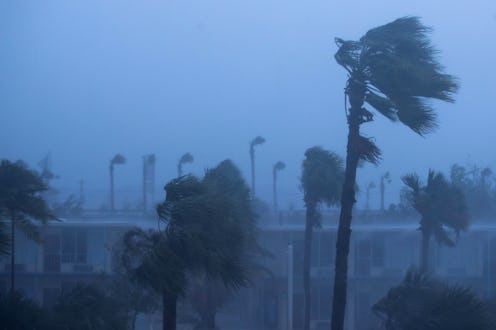News
Here’s The Difference Between A Tropical Depression & A Tropical Storm

It's hurricane season in the Atlantic, which means that for the next couple of months, the southeastern U.S. will keep an eye out for potential storms coming their way. What could be the first big storm of the season, Tropical Storm Emily, touched land in Florida on Monday after being upgraded from a tropical depression, causing Gov. Rick Scott to declare a state of emergency in 31 of 67 Florida counties. But what is a tropical depression, and how is it different from a tropical storm?
It all has to do with how fast the winds are blowing in the system. Before a weather system is classified as a tropical storm, it starts out as a depression. During a tropical depression, a low pressure area and thunderstorm form a circular wind flow below 39 mph, typically between 25 and 35 mph.
Once a tropical depression reaches sustained winds of 39 mph to 73 mph, it becomes a tropical storm. According to Accuweather, a tropical depression is the first level of categorization of a tropical system or activity.
A tropical system isn't actually named until it becomes a tropical storm. The National Hurricane Center is responsible for storm naming under a system with six rotating lists of male and female names. Names can be recycled, but may be retired once a particularly devastating storm hits for purposes of sensitivity.
After a system is classified as a storm, it can be upgraded to a hurricane once the winds reach more than 73 mph. Then they take on category numbers to describe the severity of the storm.
As of 7 a.m. Monday, Emily's winds reached a sustained 45 mph, thereby officially earning the status of a tropical storm. By around 11 a.m., the storm had touched down on Anna Maria Island, west of Bradenton, Florida, according to The Associated Press.
According to weather reports, central Florida is expected to receive 2 to 4 inches of rain from Emily through Monday night. However, isolated rain could reach up to eight inches along the west coast of central Florida between Tampa Bay and Naples.
Florida is just beginning to see what could be a heavy hurricane season for 2017. Forecasters at the National Oceanic and Atmospheric Administration have predicted an "above normal" hurricane season for this season that occurs until Nov. 30. Specifically, they predicted a 70 percent chance of 11 to 17 named storms, meaning storms that reach over 39 mph winds.
So, now might be a good time to remind Florida and southern residents to have a plan in place not only for Tropical Storm Emily, but for future storms down the road this year.